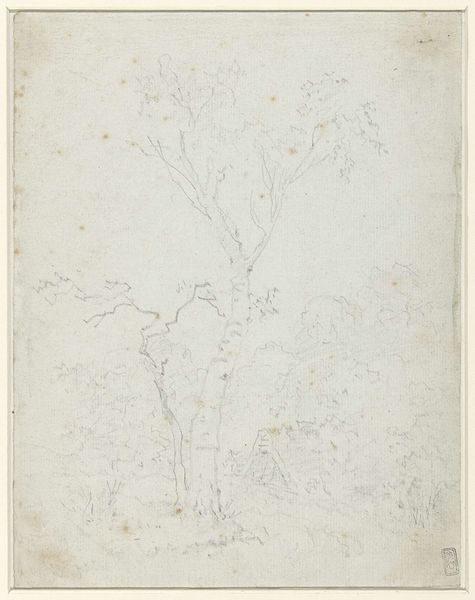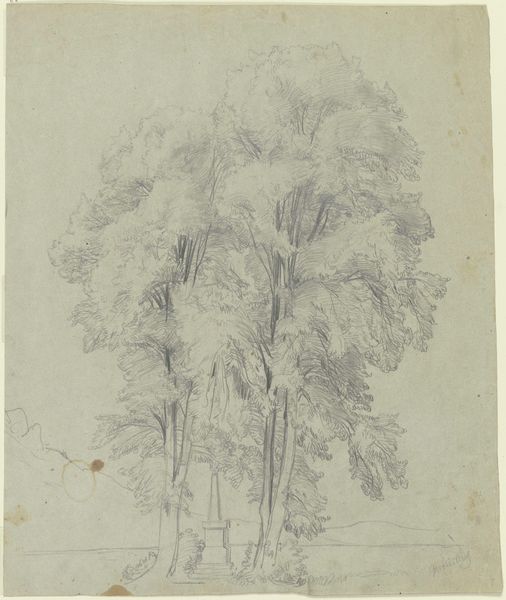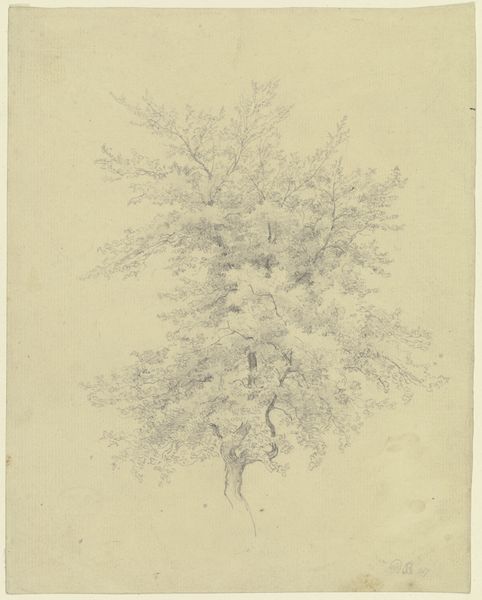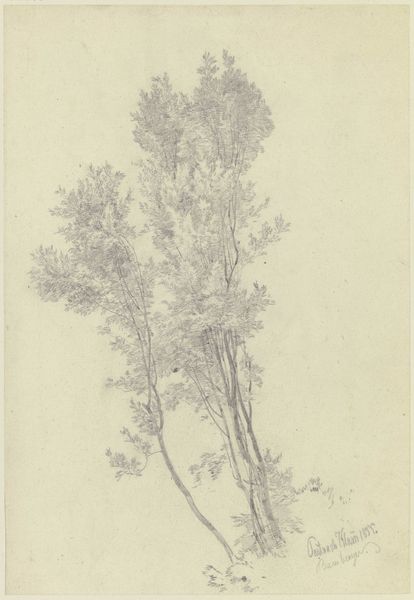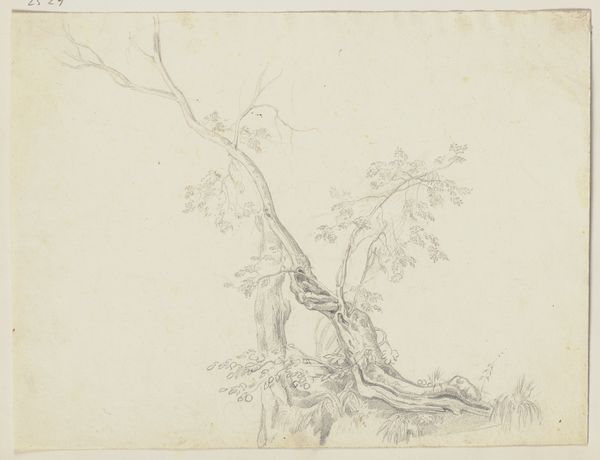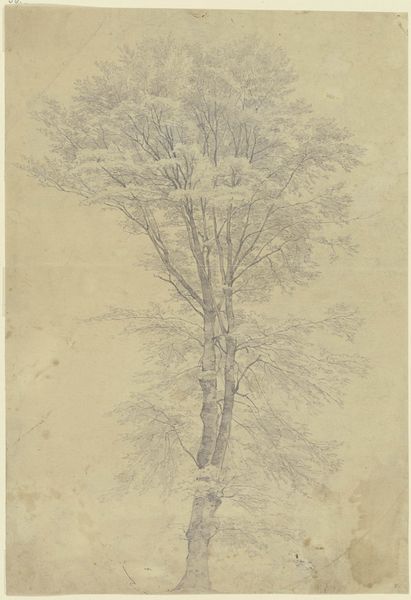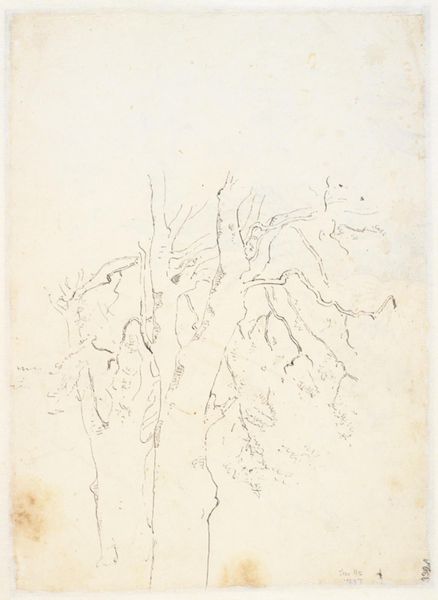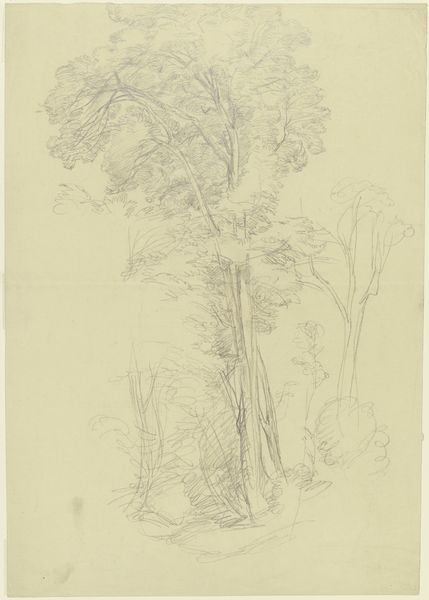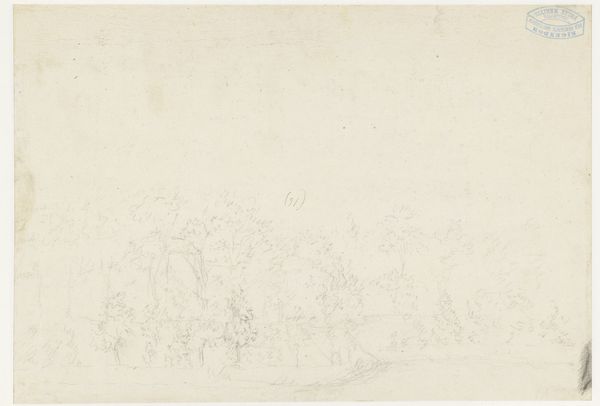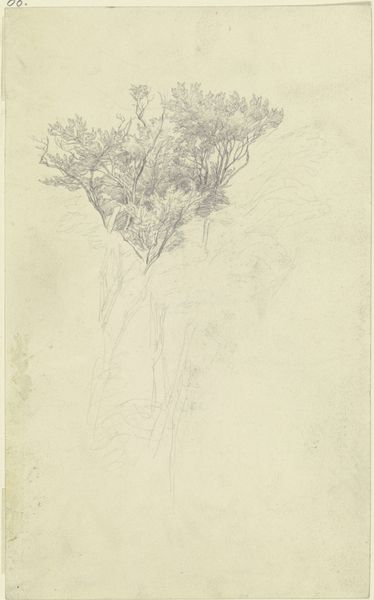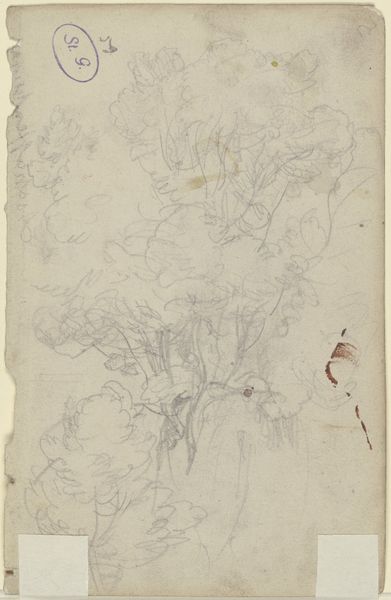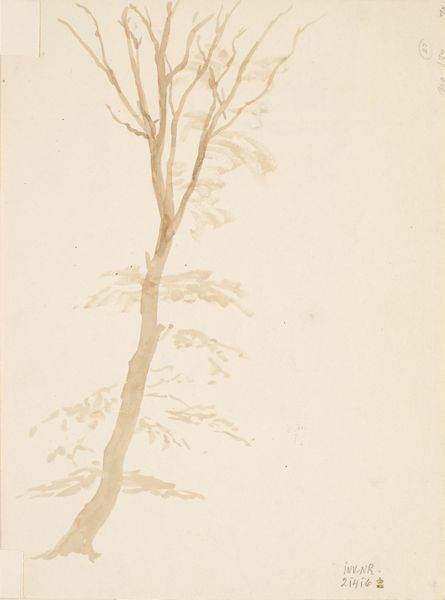
Dimensions: 323 mm (height) x 207 mm (width) (bladmaal)
Curator: Looking at this piece, I feel a profound sense of quiet. It's subtle, almost like a whisper of a memory. Editor: Indeed. What we're viewing is a pencil drawing titled "Studie af en trægruppe", or "Study of a Group of Trees," created by Jens Juel sometime between 1714 and 1802. It’s part of the collection at the SMK, the National Gallery of Denmark. Curator: The lines are so delicate. Notice how the artist uses subtle variations in pressure to define the foliage, almost dissolving into the pale paper. The composition is simple, yet evokes a whole landscape. Editor: Juel, a leading portrait painter of his time, interestingly explores landscape in this work, influenced by the rising Romantic ideals of finding sublime beauty in nature. The accessibility of landscapes was linked to bourgeois social identities, enabling new connections between public and private life. Curator: That makes sense. The understated nature of this "study" contrasts with the more theatrical landscapes of the period. There's no heroic narrative, just a quiet observation of nature's forms. But could you talk more about its form? Editor: Consider the artist's deft handling of the pencil. There's a distinct lack of defined contour; the edges blur, giving a sense of atmospheric perspective despite the minimalist execution. Semiotically, these lines act as an index, subtly hinting at a deeper connection to the world and its raw state. Curator: Perhaps the unfinished nature of the study is the key to its power. It allows us to project our own emotions and associations onto it, reflecting the growing importance of individual experience. It reflects shifting aristocratic forms of patronage too; landscapes now held appeal because of their cultural capital as art investments rather than simply their representational accuracy. Editor: That's a thought-provoking point. The drawing style may signify a broader change in taste, emphasizing feelings and experiences over rigid representation. Perhaps what captures the eye most is that the form expresses what words cannot describe with language. Curator: For me, its cultural importance lies in its subtle negotiation of these emerging sensibilities, marking the transition from the Enlightenment's order to Romanticism's emotional intensity. Editor: And for me, it's the power of such an incomplete vision and yet a fully powerful suggestion with simple materials. Curator: I appreciate how your understanding focuses on this formal technique. Editor: Thank you. And my focus benefits from your wider socio-political overview.
Comments
No comments
Be the first to comment and join the conversation on the ultimate creative platform.
